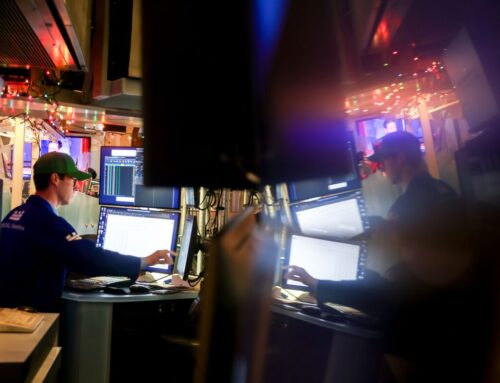More Wisconsin cities are powering municipal operations with renewable electricity
March 31, 2025
Cities across Wisconsin are investing in renewable electricity to power their municipalities. From city hall to the local library to traffic lights, these municipalities have made it a goal to reduce spending and emissions by switching to green energy.
Sun Prairie is one of those cities.
The Madison suburb recently hit its goal of powering all municipal operations with 100 percent renewable electricity. That includes all city buildings and other infrastructure like electric vehicle charging stations, traffic lights and well pumps.
This field is for validation purposes and should be left unchanged.
Rose Daily is the sustainability and resilience manager for the city of about 36,000 people.
“By decarbonizing our municipality through our electricity consumption, we are really leading by example so that our residents and our businesses can follow in our footsteps,” she said.
Daily said the shift has reduced Sun Prairie’s greenhouse gas emissions by over 5,300 metric tons of carbon dioxide equivalents per year. That’s equal to the emissions from powering 700 homes for a year.
The city has also seen a cost savings of $40,000 on its electricity bills from 2023 to 2024.
“That just shows the financial benefits that are tied to these clean electricity systems,” Daily said. “Those dollars that are now being freed up can be spent on other municipal projects, or they can be passed on directly to our residents in the form of tax bill reductions.”
To reach its goal, Sun Prairie increased its energy efficiency and invested in solar arrays to power much of its operations. For the electricity the city couldn’t produce in house, it purchased renewable energy certificates from its utility — WPPI Energy.
Anne Rodriguez is the spokesperson for WPPI, which is made up of nonprofit, locally-owned electric utilities. She said being a part of an energy co-op makes it easier for small communities to become leaders in renewable energy.
Each year, the U.S. Department of Energy’s National Renewable Energy Laboratory ranks the nation’s top utilities for their participation and sales rates in renewable energy programs. And Wisconsin communities consistently make the list.
In 2024, Columbus, Muscoda, River Falls, Stoughton, Sun Prairie, Waunakee, Waterloo and Westby were all recognized.
“How do these small utilities end up on these national rankings? It is our experience that responding to what local community members want is what drives municipal leadership achievements in renewable energy,” Rodriguez said.
“Often in the background there is a sustainability committee in the community that is advising the municipality and its utility on what it is they want to achieve,” she added.
Rodriguez pointed to River Falls as a longtime leader in renewables. The city reached its 100 percent renewable electricity goal in 2020 after the mayor at the time challenged the city of Lodi to top the National Renewable Energy Laboratory list.
“The two communities were competing to end up at the top of these lists because they both felt like, ‘Hey, this is an important part of who we are as communities,’” Rodriguez said.
WPPI serves about 41 municipalities that own their own electric utility, and Rodriguez said more communities are setting goals to power their operations with green energy.
The state’s biggest cities are also making an effort.
Milwaukee has two new projects that, once completed, will power a quarter of the city’s operations with renewable electricity.
Madison is working toward a goal to power its operations with 100 percent renewable energy by 2030 and was 82 percent of the way there in 2023.
Wisconsin Public Radio, © Copyright 2025, Board of Regents of the University of Wisconsin System and Wisconsin Educational Communications Board.
Search
RECENT PRESS RELEASES
Related Post




